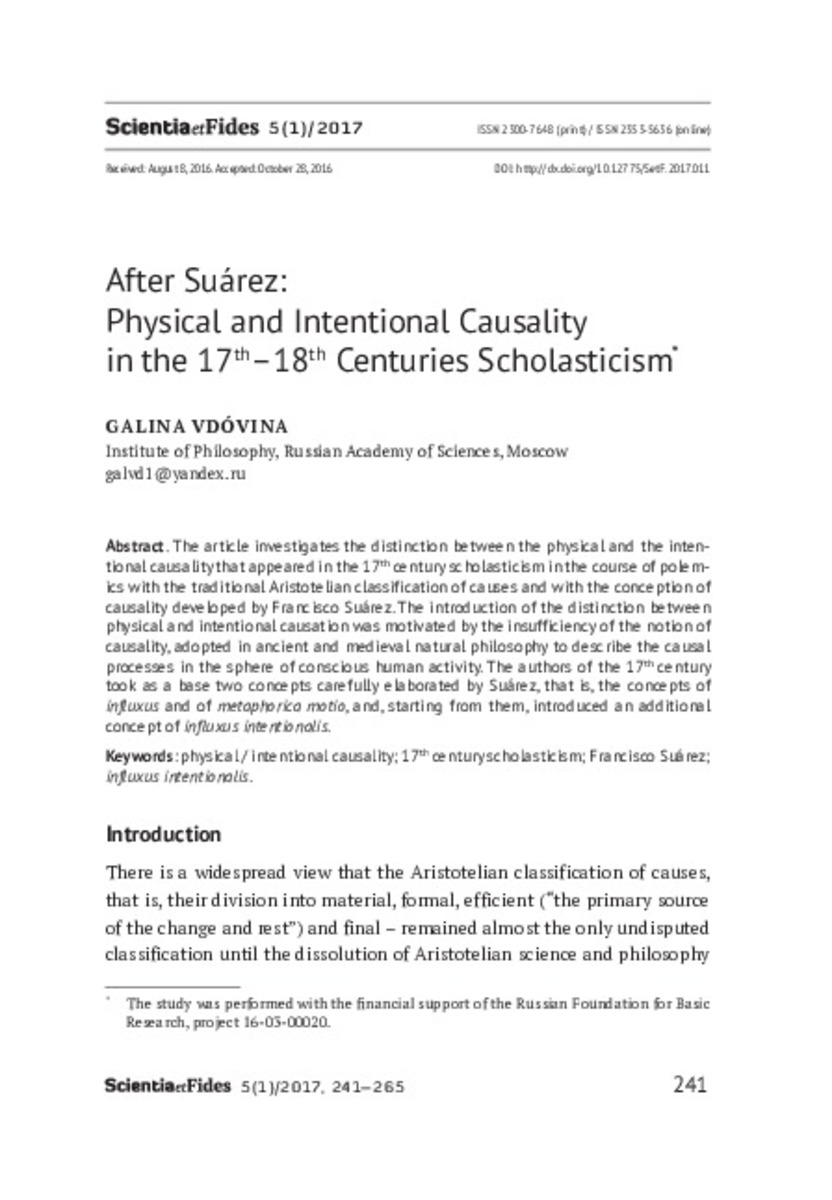Registro completo de metadatos
| Campo DC | Valor | Lengua/Idioma |
|---|---|---|
| dc.creator | Galina, V. (Vdóvina) | - |
| dc.date.accessioned | 2017-05-18T18:55:13Z | - |
| dc.date.available | 2017-05-18T18:55:13Z | - |
| dc.date.issued | 2017 | - |
| dc.identifier.citation | Galina, V. (2017). After Suárez: Physical and Intentional Causality in the 17th–18th Centuries Scholasticism. Scientia et Fides, Vol. 5, Nº 1, pp. 241-265 | es_ES |
| dc.identifier.issn | 2353-5636 | - |
| dc.identifier.uri | https://hdl.handle.net/10171/43320 | - |
| dc.description.abstract | The article investigates the distinction between the physical and the intentional causality that appeared in the 17th century scholasticism in the course of polemics with the traditional Aristotelian classification of causes and with the conception of causality developed by Francisco Suárez. The introduction of the distinction between physical and intentional causation was motivated by the insufficiency of the notion of causality, adopted in ancient and medieval natural philosophy to describe the causal processes in the sphere of conscious human activity. The authors of the 17th century took as a base two concepts carefully elaborated by Suárez, that is, the concepts of influxus and of metaphorica motio, and, starting from them, introduced an additional concept of influxus intentionalis. | es_ES |
| dc.language.iso | eng | es_ES |
| dc.publisher | Servicio de Publicaciones de la Universidad de Navarra | es_ES |
| dc.rights | info:eu-repo/semantics/openAccess | es_ES |
| dc.subject | physical/intentional casuality | es_ES |
| dc.subject | 17th centrury scholasticism | es_ES |
| dc.subject | Francisco Suárez | es_ES |
| dc.subject | influxus intentionalis | es_ES |
| dc.title | After Suárez: Physical and Intentional Causality in the 17th–18th Centuries Scholasticism | es_ES |
| dc.type | info:eu-repo/semantics/article | es_ES |
Ficheros en este ítem:
Estadísticas e impacto
Los ítems de Dadun están protegidos por copyright, con todos los derechos reservados, a menos que se indique lo contrario.






